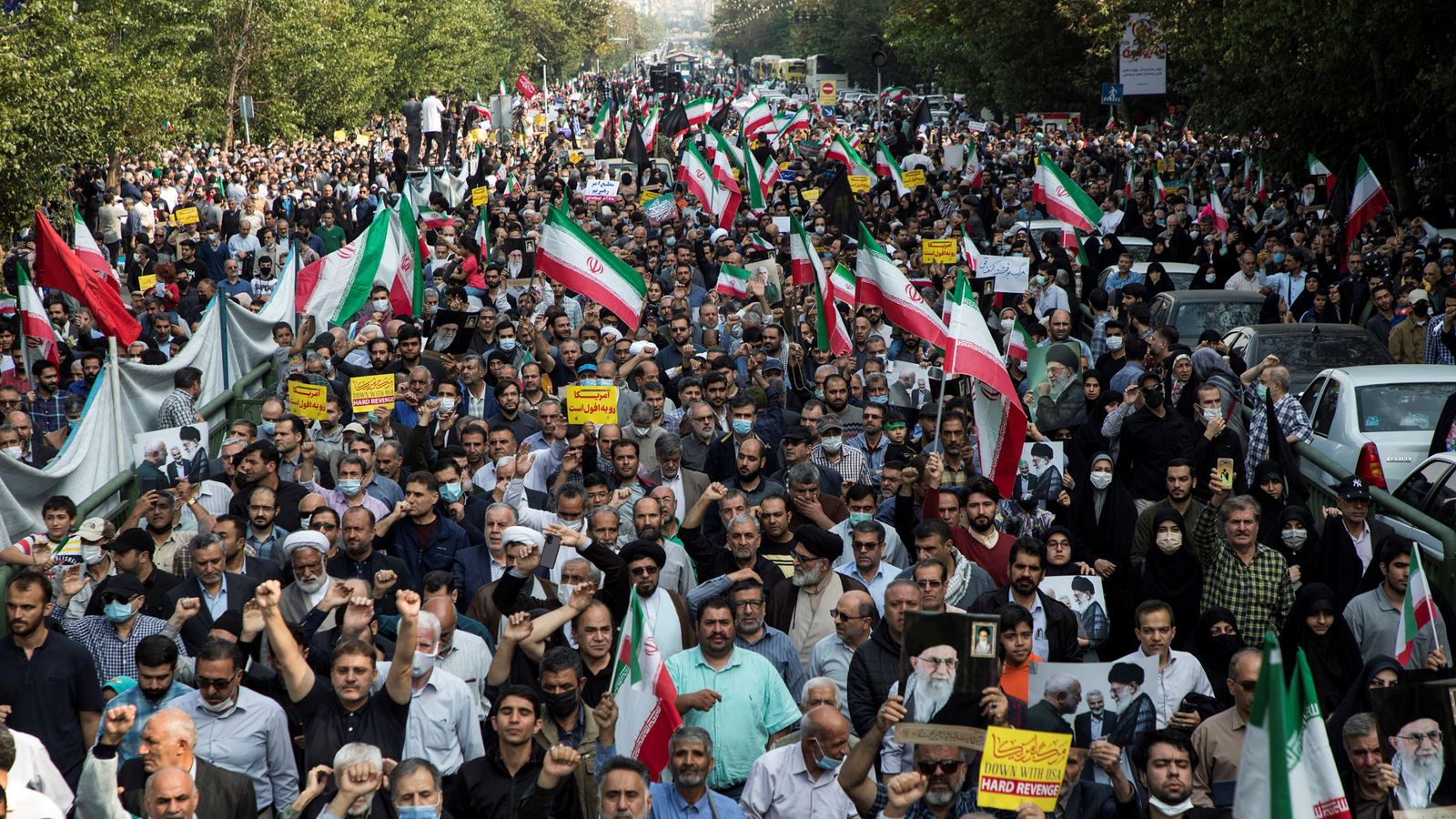The commander of Iran’s powerful Revolutionary Guards has warned protesters not to leave their homes to demonstrate and that Saturday will be the “last day” of taking to the streets.
“Do not come to the streets! Today is the last day of the riots,” Hossein Salami said.
His ominous warning comes amid reports that two people were killed after Iranian security forces opened fire on protesters in a southeastern city, on Friday.
Nationwide demonstrations have been taking place, following the death of 22-year-old Mahsa Amini in police custody last month, after being detained for alleged violations of the country’s strict dress code.
The city of Zahedan, located in Iran’s Sistan and Baluchestan province, bordering Afghanistan and Pakistan on the Gulf of Oman, has seen the deadliest violence so far in the weeks of protests, which passed 40 days last week.
On Friday, soldiers surrounded a key Sunni mosque in an area of Zahedan where residents rallied against the Iranian government, while also shooting at demonstrators, activists said.
Videos from the advocacy group HalVash showed demonstrators chanting: “Death to the Basiji”, a reference to the volunteer forces of the country’s paramilitary Revolutionary Guard, which is answerable only to Iran’s Supreme Leader Ayatollah Ali Khamenei.
Smuggled out footage shows a world Iranian security forces don’t want revealed
Mass protests and government buildings attacked – online evidence shows what’s happening in Iran
Iran protests: The people versus the regime
Footage also appeared to show the use of tear gas and what looked like spent rifle cartridges on the street, later showing streaks of blood on tilework and bloody palm prints in the Zahedan’s Makki Grand Mosque courtyard, with activists saying they feared two people had been killed.
“Police officers, please open the way for worshippers,” a voice over the mosque’s loudspeakers pleaded at one point. “Don’t cause (trouble) so that people can return to their homes.”
The internet advocacy group NetBlocks said they believed online access had been disrupted in the city.
State television in an online report said one person had been killed in Zahedan and 14 others wounded. It did not say who was behind the shooting.
The United Nations on Friday condemned “all incidents that have resulted in death or serious injury to protesters” in Iran and reiterated “that security forces must avoid all unnecessary or disproportionate use of force against peaceful protesters”.
UN spokesman Stephane Dujarric said: “Those responsible must be held to account,” adding that the UN was urging Tehran “to address the legitimate grievances of the population, including with respect to women’s rights”.
Demonstrations in Zahedan, calling for change, erupted in part over a rape allegation against a senior police officer there.
Activists estimate that nearly 100 people have been killed in Zahedan alone since a rally on 30 September in the city set off a violent police response.
The state-run IRNA news agency carried a statement by Sistan and Baluchestan’s security council issued earlier on Friday saying that the police chief in Zahedan and another police official have been sacked over their handling of the protest on 30 September.
Click to subscribe to the Sky News Daily wherever you get your podcasts
The statement for the first time acknowledged that police shot and killed people praying at the time at a nearby mosque.
The security council’s version of the demonstration alleged that 150 people, including armed men, attacked a police station and attempted to take it over during the protests.
The “armed conflict, and police shooting, unfortunately, led to the wounding and killing of a number of worshippers and innocent passers-by who had no role in the unrest”, it said.
However, the statement claimed that only 35 people were killed, while activists estimate about three times that number were killed by security forces, who also allegedly fired on protesters from helicopters.
Read more:
Mass protests and government buildings attacked – online evidence shows what’s happening in Iran
The country has a theocratic government, meaning its ruling systems are based on religious laws and precepts.
The protests have become the greatest threat to the Iranian government since the 2009 Green Movement demonstrations. International pressure is also being applied to the government, over its treatment of protesters.
Demonstrations have evolved from focusing on women’s rights and the state-mandated headscarf, to calls to oust Shiite clerics who have ruled Iran since the 1979 Islamic Revolution.
The demonstrations have involved over 125 cities; at least 270 people have been killed and nearly 14,000 have been arrested, according to the group Human Rights Activists in Iran.












